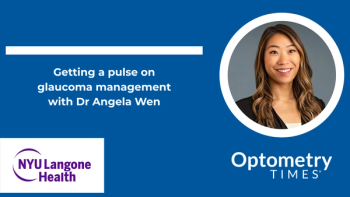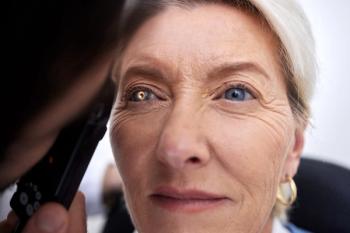
- August digital edition 2020
- Volume 12
- Issue 8
The evolving standard of care in AMD
Apply lessons learned in glaucoma to treating macular degeneration
Impaired dark adaptation occurs several years before clinically evident damage to the eye has occurred in AMD. Technological advances have revolutionized dark adaptation testing, allowing it to be carried out easily in virtually any setting.
When new technology can impact an entire generation of patients, optometrists have an opportunity to change. Such was the case a generation ago in glaucoma with functional testing (automated perimetry), and we are witnessing this same change now with age-related macular degeneration (AMD).
Prior to automated perimetry, glaucoma diagnoses were based on structural changes of the optic nerve along with intraocular pressure (IOP) and documented with fundus photography. In many cases, subtle optic-disc changes were questioned or ignored. All of this changed with the advent of automated perimetry, which provided eyecare professionals a means to support glaucoma diagnoses by assessing early functional changes. Indeed, automated perimetry had a dramatic influence on the diagnosis, monitoring, and care of glaucoma patients, and it became the standard of care.
When glaucoma’s sea change occurred, I remember the impact it had on our profession. Optometry appears to be witnessing another paradigm shift—this time in how we approach AMD.
Missing the diagnosis
AMD is more prevalent than glaucoma and diabetic retinopathy combined,1 yet very few optometrists can say they have three times as many AMD patients as they do glaucoma patients. Why might this be the case? Put simply, ODs are not diagnosing it as often or as early as they could be.
Historically, the failure to diagnose was largely due to a lack of diagnostics. After all, ODs are great clinicians, but research demonstrates that even stereoscopic macular observation and evaluating fundus photos for subtle drusen and pigmentary changes can be tedious. A study published in JAMA Ophthalmology showed just how often diagnoses are missed by optometrists and ophthalmologists alike—even when the doctors were aware that their findings would be double-checked by trained graders.2
This cross-sectional study, which included 1,288 eyes (644 adults) from patients enrolled in the Alabama Study on Early Age-Related Macular Degeneration (ALSTAR),3,4 revealed that eyecare practitioners are missing AMD about 25 percent of the time. Also quite concerning is that 30 percent of the undiagnosed eyes in the study had large drusen, a well-known risk factor for progression to advanced disease.2
Shifting our understanding of diagnostic standards
Much like glaucoma, subtle functional changes are present in AMD prior to the earliest clinical indicators of the condition. Also, like glaucoma care before automated perimetry became the standard of care and subsequently software advances aided in earlier diagnosis, AMD screening and disease classification was—until recently—based exclusively on structural changes.
However, functional changes presenting as impaired dark adaptation take place several years before clinically evident damage to the eye has occurred.4 As a result of not diagnosing AMD early and not actively monitoring disease progression, up to 78 percent of wet AMD patients are seeking their first treatment after experiencing substantial, irreversible vision loss—including 37 percent who are legally blind in at least one eye.5,6
Identifying early AMD before significant visual impairment is the goal, yet the condition is difficult to observe with clinical examination or even advanced imaging technologies. Eyecare practitioners are able to use dark adaptation to identify patients with subclinical disease. Delayed dark adaptation is the first clinical biomarker for AMD and precedes visible presentation of drusen.4Based on the preferred practice patterns of the American Academy of Ophthalmology,7 dark adaptation functional testing may overcome the practical challenges associated with diagnosing AMD using only traditional objective clinical assessment.
Dark adaptation screening for AMD generally is being applied to patients over age 50 years because this was the earliest inclusion age in theAge-Related Eye Disease Study (AREDS).8 Careful probing for subtle low-light vision impairment will likely lower this threshold and also reveal this change in patients who may consider visual changes as “age appropriate.”
As more eyecare practitioners incorporate dark adaptation testing into their practices, they are likely to see a trend similar to that of glaucoma with older patients having higher rates of AMD than currently document in their charts.
References
1. Klein R, Chou CF, Klein BEK, Zhang X, Meuer SM, Saddine JB. Prevalence of age-related macular degeneration in the US population. Arch Ophthalmol. 2011 Jan;129(1):75-80.
2. Neely DC, Bray KJ, Huisingh CE, Clark ME, McGwin Jr G, Owsley C. Prevalence of undiagnosed age-related macular degeneration in primary eye care. JAMA Ophthalmol. 2017 Jun 1;135(6):570-575.
3. Owsley C, Huisingh C, Jackson GR, Curcio CA, Szalai AJ, Dashti N, Clark M, Rookard K, McCrory MA, Wright TT, Callahan MA, Kline LB, Witherspoon CD, McGwin G Jr. Associations between abnormal rod-mediated dark adaptation and health and functioning in older adults with normal macular health. Invest Ophthalmol Vis Sci. 2014 May 22;55(8):4776-4789.
4. Owsley C, Huisingh C, Clark ME, Jackson GR, McGwin Jr G. Comparison of visual function in older eyes in the earliest stages of age-related macular degeneration to those in normal macular health. Curr Eye Res. 2016;41(2):266-272.
5. Olsen TW, Feng X, Kasper TJ, Rath PP, Steuer ER. Fluorescein angiographic lesion type frequency in neovascular age-related macular degeneration. Ophthalmology. 2004 Feb;111(2):250-255.
6. Cervantes-Castañeda RA, Banin E, Hemo I, Shpigel M, Averbukh E, Chowers I. Lack of benefit of early awareness to age-related macular degeneration. Eye (Lond). 2008 Jun;22(6):777-781.
7. American Academy of Ophthalmology. Age-Related Macular Degeneration PPP 2019. Available at: https://www.aao.org/preferred-practice-pattern/age-related-macular-degeneration-ppp. Accessed 8/10/20.
8. Age-Related Eye Disease Study Research Group. The Age-Related Eye Disease Study (AREDS): design implications. AREDS report no. 1. Control Clin Trials. 1999 Dec;20(6):573-600.
Articles in this issue
over 5 years ago
3 steps to managing scleral lens patients with allergiesover 5 years ago
3 reasons to fit kids with contact lensesover 5 years ago
Dry eye intranasal spray stimulates the trigeminal nervesover 5 years ago
Technology for optometry post COVID-19over 5 years ago
5 essential truths to treating dry eye diseaseover 5 years ago
How the tear film affects IOL measurementsover 5 years ago
Optimizing ocular blood flow in glaucoma managementover 5 years ago
The time is now for optometry and telehealthover 5 years ago
IPL: The science of comfort and safetyNewsletter
Want more insights like this? Subscribe to Optometry Times and get clinical pearls and practice tips delivered straight to your inbox.













































.png)


